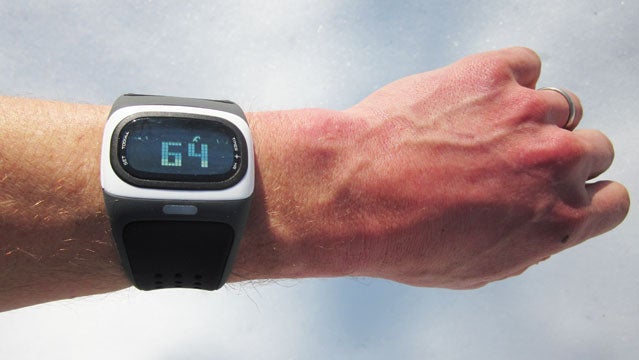Wearing a heart-rate monitor helps you stick to your training plan during a workout without going too fast or slacking off. I’m currently prepping for the Boston Marathon, and I’ve found myself depending on monitors every time I hit the road.
Until recently, I had only used monitors that required me to wear a chest strap, a big, annoying black sensor that had to be constantly moistened in dry, cold weather or it would lose my heartbeat. When the review unit arrived in the mail, I realized my running equipment had just changed radically.
The $199 Mio, which debuted in December, is a rechargeable watch that takes accurate, continuous heart-rate readings through one’s wrist. It uses an optical sensor that reads your pulse without any extra equipment. There have been other optical- and electrically-based watch sensors, but they were unreliable.
To test the Mio, I first took it on two easy runs. On these I usually use a monitor to keep the pace at 65 percent of my maximum heart rate, so I don’t tire out too much and ruin the rest of my week. At first, the Mio’s readings were poor and all over the map, but after I double-checked the directions and inched the watch up toward my elbow, the Mio consistently produced accurate numbers.
On a harder workout, the Mio compared well with data from my trusty Polar, Garmin, and Suunto monitors. I noticed the device took longer than the Polar to adjust to abrupt changes in heart rate, but that didn’t make a significant difference. Overall, not having to use a chest sensor was more than worth the minor hassles I had in adjusting to the Mio’s design. Sayonara, strap.


